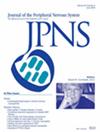Clinical and Electrophysiological Characterization of Diabetic Neuropathy in a Sub-Saharan African Cohort
Abstract
Background
Diabetic neuropathy (DN) is the most frequent complication of diabetes mellitus, contributing to increased morbidity and mortality. Previous clinical studies on DN in sub-Saharan Africa (sSA) have used purely clinical approaches, potentially underestimating the true magnitude of this disease. This study was designed to determine the prevalence of definite diabetic neuropathy and describe the different subtypes using objective small and large fiber function measures.
Methods
This was a hospital-based cross-sectional study that included diabetes and prediabetes patients, followed up at Jordan Medical Services, Yaoundé, Cameroon, between March 2022 and February 2023. The “Toronto Clinical Neuropathy Score” and “Douleur Neuropathique en 4” questionnaires were used for clinical evaluation. Autonomic symptoms were equally recorded. Nerve conduction studies and Sudoscan were used for electrophysiological assessments of large and small fibre functions.
Results
Eighty-four participants were included; 91.7% had type 2 DM, 2.4% had type 1 DM, and 6% had glucose intolerance. DN was found in 73/84 (86.9%). Diabetic sensorimotor polyneuropathy (DSP) was the most frequent subtype (63.8%), followed by diabetic autonomic neuropathy (40.5%), mononeuropathy (36.9%), asymmetric axonal sensory neuropathy (4.8%) and treatment-induced neuropathy of diabetes (TIND) in 1.2% of patients. The prevalence of large and small fibre neuropathies was 38.1% and 25.0%, respectively.
Conclusion
The prevalence of DN and specifically DSP in our study was higher than previously described in African literature. We identified subtypes never before reported in sSA, mainly small fibre neuropathy and TIND. This may have management and policy implications.


 求助内容:
求助内容: 应助结果提醒方式:
应助结果提醒方式:


